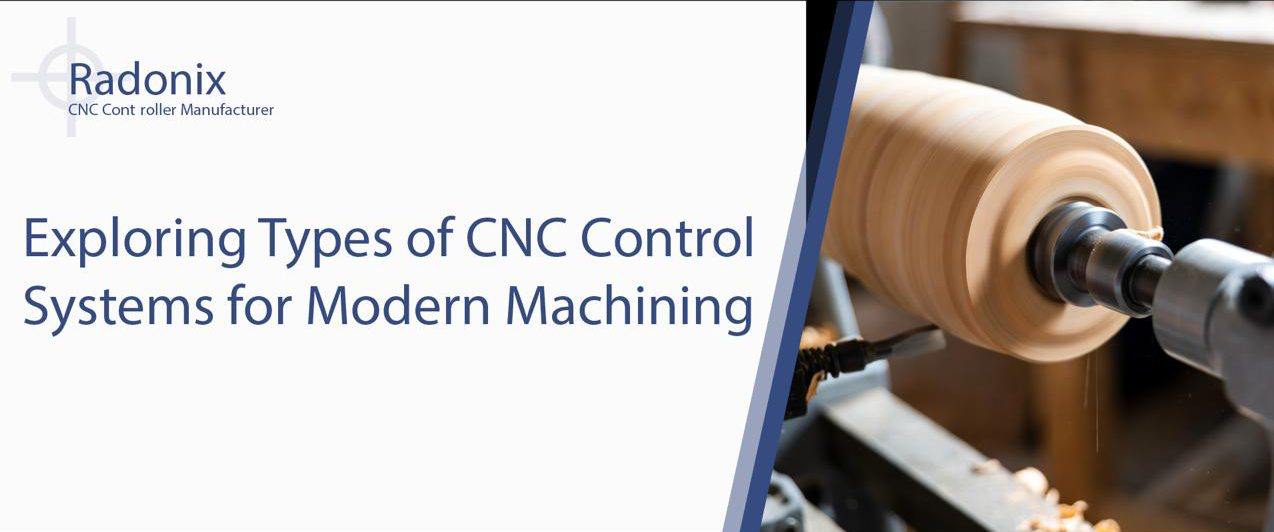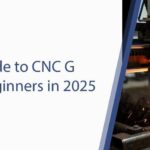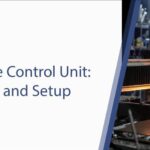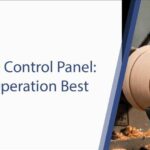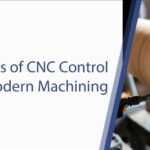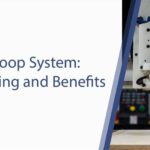In 2025, selecting the wrong control architecture can slash accuracy, inflate scrap, and drain energy budgets. This article explores the Types of CNC Control Systems you’ll encounter—from open-loop to closed-loop, hybrid, point-to-point, and continuous path—so you can match capability to the job. We’ll build a concise cnc control systems overview, compare real-world performance in milling, turning, and additive, and show how Radonix integrations shorten commissioning while boosting reliability.
You’ll see how to evaluate cnc controller types on precision, speed, complexity, and cost; how a cnc closed loop system delivers micron-level repeatability; and when hybrid cnc controls pay off with adaptive behavior. For grounding in controller architecture and HMIs, start with our primer: How CNC Controller Works: Full Guide to Precision Control on the Radonix blog.
Fundamentals: What Defines Types of CNC Control Systems?
Before comparing specific platforms, it helps to define what distinguishes the Types of CNC Control Systems you’ll see in the field.
Core classification criteria
- Feedback mechanisms: Presence or absence of position/velocity feedback (open loop vs closed loop CNC).
- Path control: Point-to-point (P2P) positioning versus continuous path (contouring/interpolating) motion.
- Motor and drive tech: Stepper-based vs. servo-based CNC controls, and spindle control sophistication.
- Control topology: Centralized CPU with integrated motion vs. distributed drives and smart edge modules.
- Real-time behavior: Determinism in interpolation, look-ahead depth, and jerk/accel control.
Key selection factors
- Precision needs: Tolerance requirements, surface finish, thermal/stiffness compensation.
- Speed and complexity: Axis count, 5-axis synchronization, high-speed machining, threading.
- Budget and service: Hardware cost, maintenance, local support for Fanuc control types or Siemens CNC systems.
- Sustainability: Energy profiles, regenerative braking, and adaptive power management.
A brief history
- 1970s–1990s: Tape-to-disk evolution; early servos popularized closed-loop control.
- 2000s–2010s: PC-based controllers, improved fieldbuses, robust CAM posts.
- 2020s–2025: IoT-connected controls, adaptive hybrid algorithms, edge analytics to stabilize cuts and reduce energy. These shifts broaden the Types of CNC Control Systems available for any shop size.
Open-Loop Systems: Simple and Cost-Effective CNC Controllers
Open-loop controls command motion without reading back position. They typically drive stepper motors with step/dir signals and assume commanded steps equal actual motion. This class sits at the low-cost end of cnc controller types and is common in hobbyist routers, plasma tables, and light-duty gantry mills.
How it works
- Controller outputs step pulses to the drive; motor moves a fixed angle per step.
- No encoder feedback—missed steps may go undetected.
- Good for low-inertia loads and modest speeds where torque margin is high.
Where it fits
- Wood routers, plastics, sign-making, foam cutting.
- Simple additive processes and light laser engraving.
- Educational machines where affordability and simplicity matter more than precision.
Pros
- Low cost and easy wiring.
- Simple commissioning; no tuning loops.
- Quiet operation at low speeds with microstepping.
Cons
- Lost steps under load lead to dimensional drift.
- Resonance and torque drop at higher RPMs.
- Not ideal for tight-tolerance metals or aggressive toolpaths.
Practical tips
- Oversize steppers and drives to preserve torque margin.
- Use conservative accelerations and verify parts with a gauge block routine.
- If a job stretches tolerance limits, consider upgrading to a cnc closed loop system.
Closed-Loop CNC Systems: Precision for Demanding Machining
A cnc closed loop system reads encoders or resolvers to compare commanded vs. actual position and velocity. Servo drives close current/velocity loops; the CNC closes the position loop and orchestrates synchronized interpolation. This category anchors high-precision milling, turning, and multi-axis contouring.
Where it shines
- Aerospace and medical milling with tight tolerances and surface finish requirements.
- CNC turning with threading and constant surface speed; synchronized spindles.
- High-speed machining and 5-axis interpolation with deep look-ahead.
Implementation checklist
- Select matched servo motors, drives, and feedback (absolute encoders recommended).
- Wire fieldbus (EtherCAT/Profinet), verify node IDs, and confirm deterministic cycle times.
- Configure motor constants, inertia, gear ratios; run auto-tuning for velocity/current loops.
- Calibrate axis scales, backlash, and straightness (ISO 230-1 methods).
- Validate with ballbar and test cuts; refine jerk/acceleration limits to balance speed and finish.
Table: Feature comparison across Types of CNC Control Systems (Open vs. Closed)
| Feature | Open-Loop | Closed-Loop |
| Feedback | None | Encoders/resolvers with position/velocity feedback |
| Accuracy | Moderate; risk of lost steps | High; automatic error correction |
| Speed | Limited by torque/resonance | High; optimized with servo tuning |
| Complexity | Low setup/tuning | Higher; requires tuning and calibration |
| Cost | Lowest | Higher upfront; lower scrap and rework |
| Best Use | Wood/plastic, light-duty | Metals, 5-axis, precision contouring |
Why choose closed loop
- True position feedback prevents drift under load.
- Better dynamic response supports aggressive toolpaths and shorter cycle times.
- Integrates thermal compensation and dynamic error mapping on advanced platforms like Siemens CNC systems and many Radonix units.
See how different control families align with your needs in Types of Controllers in CNC Machines Explained on the Radonix blog.
Hybrid CNC Controls: The Future-Proof Choice for Versatility
Hybrid architectures combine elements of open and closed loop—often steppers with encoders (closed-loop steppers) or mixed axes where critical ones use servos while auxiliaries use steppers. These hybrid cnc controls offer a pragmatic balance of cost, precision, and upgrade flexibility.Typical hybrid patterns
- Closed-loop steppers on X/Y, open-loop on Z to cut cost where gravity aids return.
- Servo on spindle and primary linear axes; steppers on rotary or auxiliary axes.
- Mixed feedback: linear scales on long axes, motor encoders elsewhere.
Benefits
- Detects and corrects missed steps without full servo complexity.
- Target precision where it matters most; save budget on non-critical axes.
- Easier retrofits: re-use existing motors where possible, add encoders later.
Tradeoffs
- Tuning complexity rises with mixed technologies.
- Not every drive supports both modes identically; integration matters.
- Still may not match pure servos on extreme dynamics.
Mini case study: Radonix hybrid deployment
- Problem: A job shop cutting aluminum chassis on a gantry mill saw dimensional drift during long runs.
- Solution: Upgraded to Radonix hybrid CNC controls with closed-loop steppers on X/Y and a servo-based Z; added linear compensation and edge analytics.
- Outcome: 25% error reduction, 12% shorter cycle time from higher accel limits, and fewer scrap events thanks to real-time correction.
When to choose hybrid
- Mixed workloads (wood, plastics, soft metals) where only some operations demand high precision.
- Budget-constrained upgrades aiming for 80–90% of servo performance.
- Machines with long belt/lead-screw runs that benefit from encoder correction but don’t need top-end servo dynamics.
For I/O density, macro support, and fieldbus options in hybrid builds, see the Radonix CNC Control Board and our controller lineup.
Point-to-Point vs. Continuous Path: Specialized Types of CNC Control Systems
Beyond feedback style, Types of CNC Control Systems also differ by path control. This cnc control systems overview helps match motion style to the application.
Point-to-Point (P2P)
- Moves between discrete coordinates; no controlled path between points.
- Typical in drilling, spot facing, pick-and-place, simple additive deposition.
- Advantages: Simple programming, fast indexing, minimal interpolation load.
- Disadvantages: Not suited to contouring, freeform surfaces, or blending radii.
Continuous Path (Contouring)
- Interpolates linear and circular (and NURBS on advanced systems) moves along a controlled trajectory.
- Used in milling profiles, sculpted surfaces, lathe profiling, laser cutting, and waterjet.
- Advantages: Smooth finishes, tight tolerances, synchronized multi-axis motion.
- Disadvantages: Requires stronger compute, drive bandwidth, and precise tuning.
Quick guidance
- Choose P2P for drilling centers or production bolt-circle parts.
- Choose continuous path for 2.5D/3D milling, profiling, and complex turning—often paired with a cnc closed loop system.
Applications Matrix Across Types of CNC Control Systems
Use this table to map control types to typical processes and materials.
| Application | Open-Loop | Closed-Loop | Hybrid | Point-to-Point | Continuous Path |
| Wood/Plastics Routing | Excellent | Excellent | Excellent | Good | Excellent |
| Aluminum 2.5D Milling | Fair | Excellent | Good–Excellent | Fair | Excellent |
| Steel/Tooling | Poor | Excellent | Good | Poor | Excellent |
| CNC Turning/Threading | Poor | Excellent | Good | Fair | Excellent |
| Laser/Plasma | Good | Excellent | Good | Good | Excellent |
| Waterjet | Fair | Excellent | Good | Fair | Excellent |
| Additive (FFF/WAAM) | Good | Good–Excellent | Good | Good | Good |
| High-Speed 5-Axis | Poor | Excellent | Good | Poor | Excellent |
Note: “Excellent” assumes tuned drives and rigid mechanics. Hybrid performance depends on which axes close the loop.
Selection Guide: Choosing Among Types of CNC Control Systems
Use this quick, numbered workflow to zero in on the right architecture.
- Define tolerance and finish
- If tolerances are under ±0.05 mm or surface finish is critical, prioritize a cnc closed loop system.
- Map processes and materials
- For metals and multi-axis contouring, continuous path with servo-based CNC controls is typically required.
- Set budget and upgrade path
- If budget is tight but you expect to grow, plan hybrid cnc controls with encoder-ready steppers and servo-ready wiring.
- Evaluate service and ecosystem
- Consider local support for Fanuc control types and Siemens CNC systems; verify CAM posts and training resources.
- Validate sustainability goals
- Choose controls supporting energy monitoring, regen, and adaptive feed/speed to reduce kWh per part.
- Pilot test
- Run your hardest part on a demo system from Radonix and compare cycle time, finish, and energy use before purchasing.
For deeper controller distinctions and architecture primers, see Types of Controllers in CNC Machines Explained and our HMI-focused overview: What Is a CNC Control Panel? Complete Guide 2025.
2025 Trends: Evolving Types of CNC Control Systems with AI
The latest wave of innovation blends the strengths of different Types of CNC Control Systems with adaptive intelligence.
What’s new
- Adaptive hybrid control: AI models adjust servo gains, feedrates, and jerk on the fly to suppress chatter and thermal drift—especially useful in open loop vs closed loop CNC retrofits where not all axes are servoed.
- Predictive energy management: Controls schedule roughing vs. finishing to flatten power demand, auto-enable spindle eco-modes, and harvest regen energy.
- Edge analytics: On-controller algorithms flag backlash growth or encoder noise early, scheduling maintenance before tolerance is lost.
- Interoperability: Modern posts and interfaces ease migration among Radonix, Fanuc control types, and Siemens CNC systems while preserving safety logic.
Conclusion: Choose With Confidence—and Measure the Results
The Types of CNC Control Systems you choose will determine your ceiling for accuracy, speed, and sustainability. Open-loop is affordable and handy for light-duty work. A cnc closed loop system delivers precision and dynamic stability for demanding metals and 5-axis. Hybrid cnc controls strike a smart balance and ease retrofits. Layer in point-to-point or continuous path control based on your parts, and don’t overlook energy and maintenance analytics.Ready to benchmark options in your environment? Pilot on Radonix hardware, compare real parts and energy per cycle, and scale knowing you chose well.Choose the right CNC control system type—explore Radonix options at radonix.com
FAQ
Q1: What is a cnc closed loop system?
A: It’s a control architecture that uses feedback devices (encoders or resolvers) to compare commanded and actual positions, correcting errors in real time. Closed loop supports higher speeds, better surface finishes, and reliable threading/contouring—ideal for metals, tight tolerances, and multi-axis machining.
Q2: How do hybrid cnc controls work?
A: Hybrid systems mix technologies—like closed-loop steppers on key axes and servos on spindles—balancing cost and performance. They detect missed steps, improve repeatability, and let you upgrade incrementally. They’re a strong choice for mixed-material shops and budget-conscious retrofits.
Q3: Which cnc controller types suit small shops?
A: For wood/plastics, open-loop stepper systems are cost-effective. For aluminum and steels or 4/5-axis, choose servo-based CNC controls in a closed loop. Hybrids help when only certain operations need high precision. Check service availability (e.g., Fanuc control types) and CAM post support.
Q4: What’s the difference between point-to-point and continuous path?
A: Point-to-point indexes between coordinates (great for drilling and spot ops), while continuous path interpolates along a trajectory for profiling and 3D surfaces. Many machines support both; pick based on your parts’ geometry and finish requirements.
Q5: How do Siemens CNC systems compare to Fanuc control types?
A: Both offer robust servo performance, advanced cycles, and ecosystem support. Differences include HMI philosophy, macro/programming options, and integration tools. Evaluate based on your shop’s existing training, service network, and which platform your CAM post and probing workflows best support.
Q6: How do I factor sustainability into control choice?
A: Look for energy monitoring, regenerative drive support, and adaptive feeds that reduce kWh per part. Hybrid and closed-loop systems with AI-driven tuning can cut air moves, stabilize chip load, and schedule maintenance to avoid wasteful rework.

